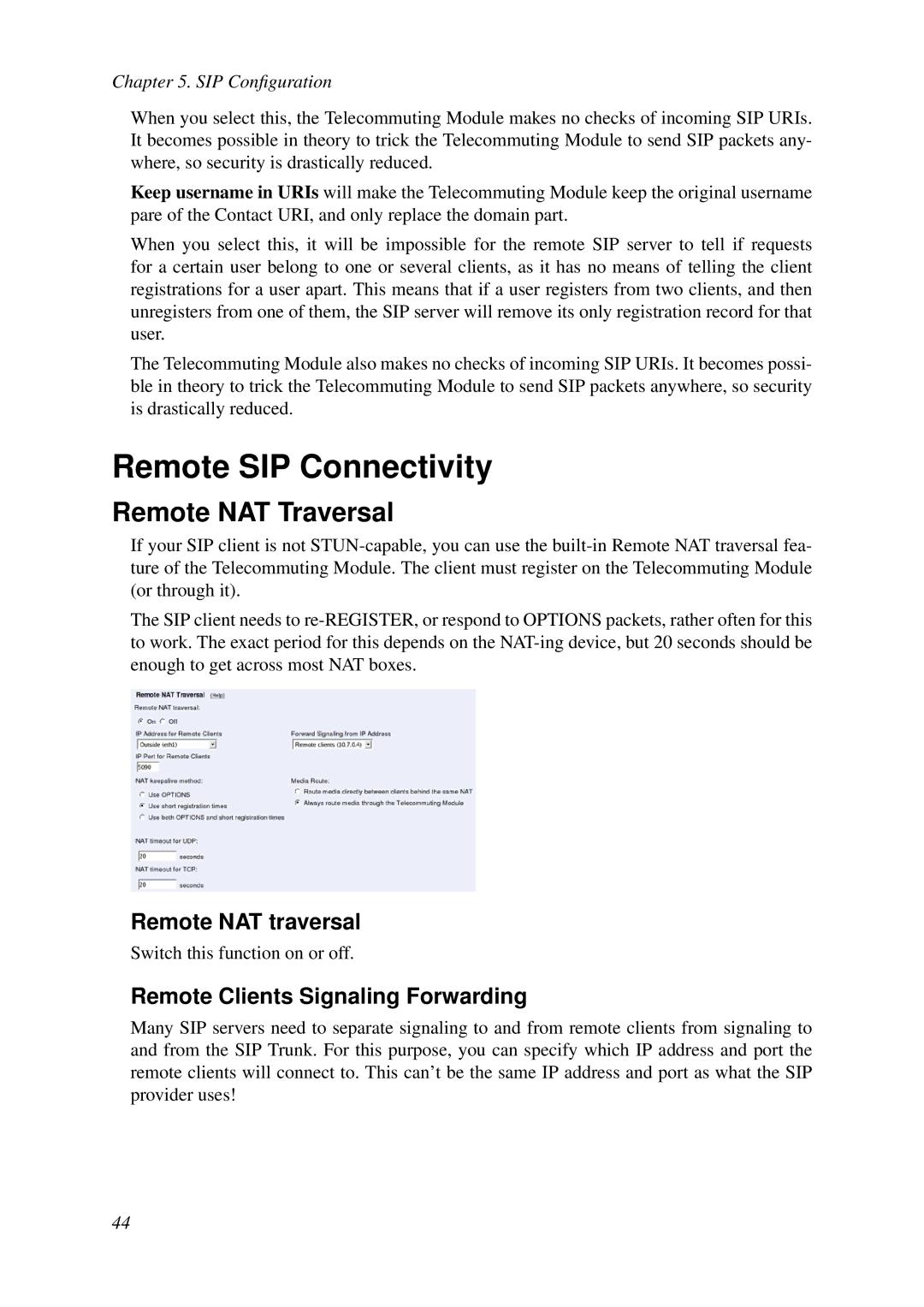
Chapter 5. SIP Configuration
When you select this, the Telecommuting Module makes no checks of incoming SIP URIs. It becomes possible in theory to trick the Telecommuting Module to send SIP packets any- where, so security is drastically reduced.
Keep username in URIs will make the Telecommuting Module keep the original username pare of the Contact URI, and only replace the domain part.
When you select this, it will be impossible for the remote SIP server to tell if requests for a certain user belong to one or several clients, as it has no means of telling the client registrations for a user apart. This means that if a user registers from two clients, and then unregisters from one of them, the SIP server will remove its only registration record for that user.
The Telecommuting Module also makes no checks of incoming SIP URIs. It becomes possi- ble in theory to trick the Telecommuting Module to send SIP packets anywhere, so security is drastically reduced.
Remote SIP Connectivity
Remote NAT Traversal
If your SIP client is not
The SIP client needs to
Remote NAT traversal
Switch this function on or off.
Remote Clients Signaling Forwarding
Many SIP servers need to separate signaling to and from remote clients from signaling to and from the SIP Trunk. For this purpose, you can specify which IP address and port the remote clients will connect to. This can’t be the same IP address and port as what the SIP provider uses!
44
